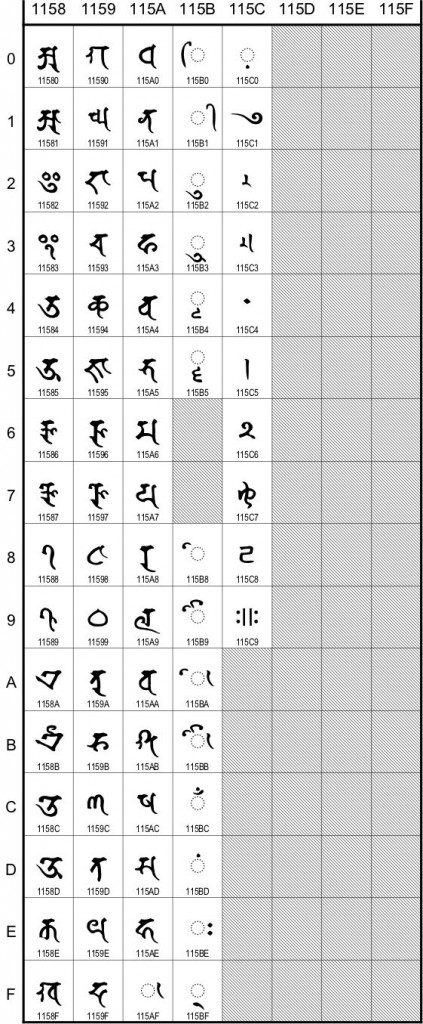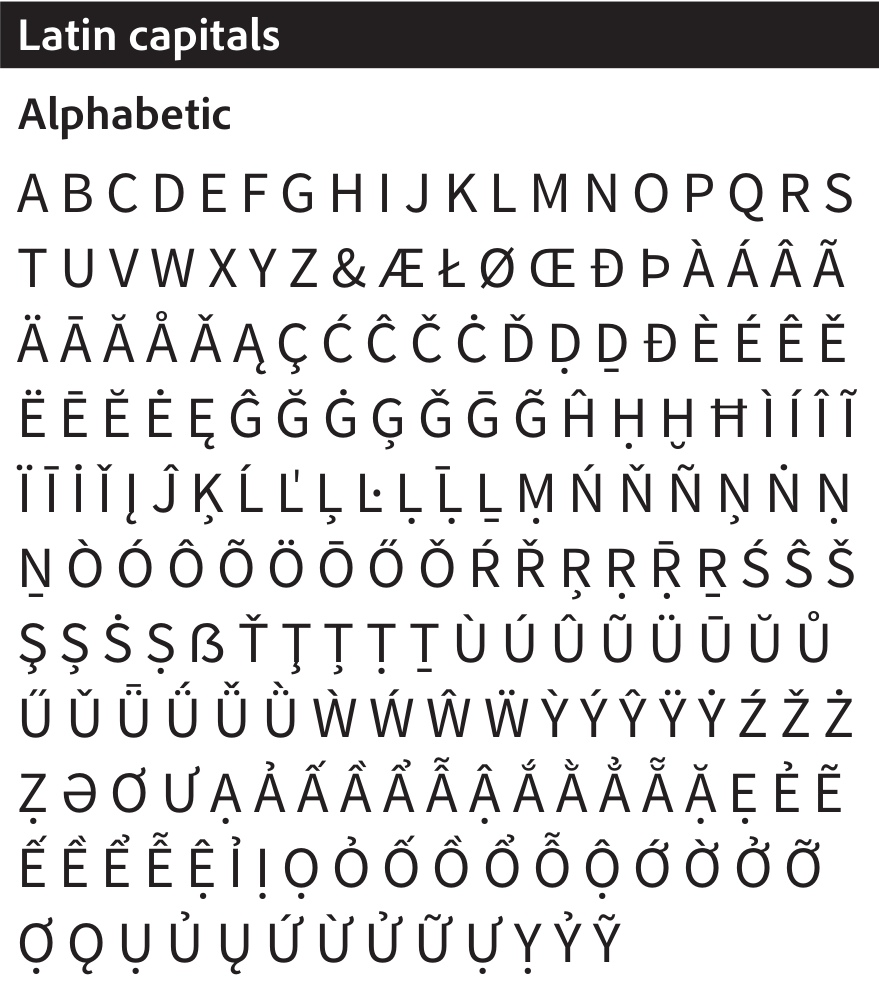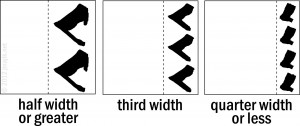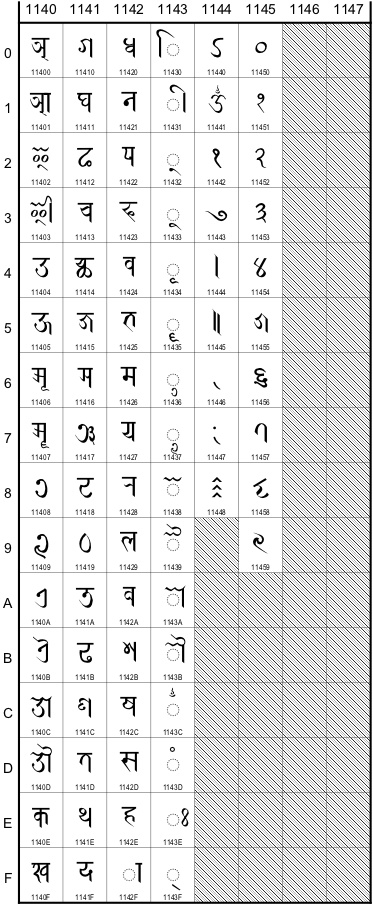田中公明 「『秘密集会』における勝義の曼荼羅について : Nāgabodhiの『安立次第論』第4章サンスクリット写本ローマ字化テキスト」 『東洋文化研究所紀要』 第162册, 2012.
Tanaka, Kimiaki. ‘Nāgabodhi’s *Samājasādhanavyavasthālī: The Tibetan Translation and Sanskrit Text of Chapter IV’. Memoirs of the Institute of Oriental Culture 162, 2012, pp.282(61)―267(76). [URI/PDF]
Schwartz, Re-enchanting China (2012)
Björn Schwartz. ‘Re-enchanting China: Private Religiosities in the Media Field in Beijing’. M. A. diss., Lund University, 2012. 120 pp. [official site / PDF]
Most of us are familiar with the official picture of tantric Buddhism as a quaint bit of old hat. But who among the determiners of the West’s cultural priorities can admit that right now, the Vajrayāna competes head-on with Christianity as the preferred religion of the world’s next elite? Schwartz pierces the unreal construction of Buddhist Asia as a ball of cuteness, unleashing a torrent of dissonant keywords:
VIP religion, guanxi-networking, post-socialist subjectivity, clubbing as networking and status affirmation, field analysis, status, the emerging structure of entitlement, social change in contemporary China, the private media field in Beijing, conversion, Vajrayana Buddhism, christianity, housechurch, religious revival, emergent social hierarchy, private religions, secret social movements, the Christian field in China, the Buddhist field in China.
Lee, Defining Buddhist art in Bengal (2009)
Lee, Eun-Su. On defining Buddhist art in Bengal: the Dhaka region. PhD Dissertation, University of Texas at Austin, May 2009. 498 pp. [official site / PDF (224.3 MB)]
From the Abstract
This dissertation addresses the significance of regional developments in Indian art, focusing on the Buddhist art tradition of the Dhaka region in East Bengal from approximately the seventh to twelfth century CE.

Johnson, Candrakīrti’s Saṃskṛtārthapratiṣedha (2012)
Johnson, Dennis. ‘Refuting the conditioned: the Saṃskṛtārthapratiṣedha of Candrakīrti’s Catuḥśatakaṭīkā’. Diplomarbeit, Universität Wien (Philologisch-Kulturwissenschaftliche Fakultät), 2012. [official / PDF]
From the Abstract
The original Sanskrit text of CŚṬ is available only in form of fragments that cover about one third of the work, and there is a critical edition of these, based on a single manuscript (Suzuki 1994). A complete Tibetan translation by Sūkṣmajñāna and Nyi ma grags is contained in the bsTan ‘gyur (P. vol. 96, 5266 ya 33b4-273b6; D. ya 30b6-239a7; C. ya 29a6-236a7; N. ya 34b2-246a6).Furthermore, there is an English translation of the verse text (Lang 1986), but not of the commentary, for which there are but translations of single chapters into different languages (Lang 1976 and 2003; Tillemans 1990 are the English ones).
The thesis further contributes to this work by presenting a translation and summary of the hitherto unaddressed chapter of CŚṬ XV, on the basis of the remaining Sanskrit text (in this case CŚṬ XV.18-25) and a critical edition of the Tibetan translation.
Pandey’s Siddham Script in Unicode proposal (2012/8)
Anshuman Pandey. ‘Proposal to Encode the Siddham Script in ISO/IEC 10646’.
ISO/IEC JTC1/SC2/WG2 N4294 L2/12-234R. PDF. 2012/08/01.
Mr. Pandey’s proposal – now no longer preliminary – promises to fill yet another gaping hole in the standard encoding of important Indic scripts. Now would be an appropriate time to comment, if you haven’t already commented.
(I would hope, at minimum, for the addition of a full set of ten digits in the final proposal. Often such basics fall through the gaps because the corpus of readily available primary material is so limited. Here‘s a nice “7-8th century” bilingual manuscript with a varṇamālā (no digits, though) which is both in good condition and readable online, thanks to the care of its Japanese custodians. Incidentally, this clearly confirms that two of the “Punctuation and ornaments” in Pandey’s Fig. 33 are ornamental final anusvāra [अं字].)
Comments should be emailed to Anshuman Pandey, whose address is given in the N4294 proposal (link above) and at the bottom of his personal website (link).

Source Sans Pro: An open source Unicode font that works
A new and ambitious font, Source Sans Pro, which has glyphs in the Latin Extended Additional codeblock (required for most Indological publishing in Unicode), was released by Adobe earlier this month.
Why ambitious? Because free, open source, high quality and produced by a stalwart of design in the digital era, all at once. Its letterforms riff on News Gothic, a typeface of enduring appeal. And it comes with an inspiringly comprehensive set of weights, from Extra Light to Black, and true italics. Anyone who knows what a proper font needs to have will know how rare and remarkable this is. Although it’s optimised for user interfaces, I’ve tested it in XeTeX and found that it works superbly. Here’s a snippet of how it looks, from the specimen:

What’s the catch? None other than the fact that just by using it and pulling apart the source, you might be more inclined to contribute to its development. A reason for releasing the font as open source (and hence free) is to demystify the increasingly complicated process of creating multiple-weight Unicode OpenType fonts, thereby encouraging the production and proliferation of fonts that meet contemporary standards. Open source lets all that complexity communally come to light, as Paul D. Hunt (and his commenters) reveal in Adobe’s official announcement of the font.
It’s downloadable from SourceForge.
Nepalese Script in Unicode, 2: More on JTC1/WG2 N4184
Refer to: Anshuman Pandey, ‘N4184 Proposal to Encode the Newar Script in ISO/IEC 10646’, February 29, 2012 [PDF]. Previous discussion: here.
0. On the Name ‘Newar’
The name ‘Newar’ is preferable simply because most other options can be ruled out. ‘Nepalese’ is untenable, because it falsely implies a one-to-one relationship with the present-day nation-state, even though it is accurate within a certain (historically earlier) context. ‘Newari’ is a (now deprecated) name for the language – not the script, nor anything else; ‘Nevārī’ is quite meaningless, except to some Indologists.
The proposal, as I understand it, indeed deals with the Pracalita script, but has enough hooks to allow unification with proposals for other Newar scripts, such as Bhujiṅmola – hence ‘Newar’. (NB: It is not yet clear whether unification with Rañjanā – which is, strictly speaking, Indo-Nepalese, and which has a user base that includes many non-Newars, such as Tibetans – is feasible. In any case, much of the present and previous discussion about the Pracalita script is also applicable to Rañjanā.)
1. Additional Information On Glyph Names
11442 NEWAR FINAL ANUSVARA: Although this mark originates with the m-virāma mark used by East Indian scribes, in Nepal it has multivalent significance and in many contexts has nothing to do with nasalization (often being interchangeable with 1144B NEWAR GAP FILLER). Recommendation: Minimise phonetic/semantic description in favour of graphic description – maybe NEWAR SEMICOLON for want of a better term. Classify under Punctuation or Various Signs.
11443 NEWAR SIDDHI = शुभचिं (Shrestha NS 1132:21). There is no uniform name for this mark in Newar (esp. not the neologism bhiṃciṃ), nor is siddhi/añji recommended (not just because this designation is unknown in Nepal, but because usage may also vary; confusion with NEWAR OM is common). Recommendation: NEWAR AUSPICIOUSNESS MARK or similar.
11448 NEWAR COMMA = अर्धविराम (Shrestha NS 1132:24).
11449 NEWAR DOUBLE COMMA: I now think this mark can be represented with two adjacent NEWAR COMMAs. Its usual behaviour of stacking diagonally (see Fig.3) rather than horizontally should however be specified. Recommendation: Remove from the repertoire.
1144B NEWAR HIGH SPACING DOT = अल्पविराम (ibid.).
1144C NEWAR ABBREVIATION SIGN CIRCLE = संक्षेपीकरण यानाः च्वयातःगु थासय् थुगु चिं (ibid.).
1145A NEWAR FLOWER = स्वांथें ज्याःगु चिं (ibid.).
1145C NEWAR PLACEHOLDER MARK is the line-width equivalent of the NEWAR GAP FILLER (see below). Recommendation: Change name to NEWAR LINE FILLER MARK.
2. Morphology of the Gap Filler Mark
Following comments on earlier drafts of N4184, especially those of Kashinath Tamot, it should be clarified that the primary function of 1144B NEWAR GAP FILLER is not that of indicating a break in a word (as per the previous name SANDHI MARK), but rather of filling space up to the end of a line margin. (A hyphen indeed performs a space-filling operation as well as functioning as a word-breaking mark. However, I suggest that ‘hyphenation’ be dropped from the formal description of this mark to avoid confusion.)
The purpose of this mark has been obvious enough to specialists – recently see, e.g. Ishida (2011:ix), where it is called a ‘line-filler character’, Zeilenfüllzeichen. (In fact, this mark does not fill a line – this is the function of 1145C NEWAR PLACEHOLDER MARK; rather, it fills a space of less than one full glyph-width at the end of a margin, not necessarily the end of a line.) Nonetheless, it is easily seen that the mark could be confused with, e.g., a visarga, daṇḍa or similar. In earlier discussion on the proposal, its purpose has remained unclear to the user community, perhaps due to its unstable shape. Significantly, the NEWAR GAP FILLER MARK changes according to the width of the glyph. Its behaviour may be represented as follows:

Variations in this mark may therefore be regarded as contextual alternatives, rather than separate code points. I suggest, as per the diagram, that no more than three variants need be represented; although the glyph could conceivably incorporate four or more variations (e.g., five vertically stacked dots, at 20% character width), this is probably excessive.
Recommendation: It may be implemented as one code point with contextual alternates, or 3 or more code points corresponding to each quantum of width.
3. Swash Forms
Several glyphs may be alternatively represented with swash forms, created by extending elements of the glyph into surrounding white space. These forms do not require dedicated representation in an encoded repertoire; however, they should be included in any full description of Indo-Newar scribal culture, and font designers might want to incorporate them. Swash forms are often contextually invoked: they are used at the top line of a block of text (upward extension), but may also be seen on the bottom line (downward extension), and even more rarely at the right and left margins, and within interlinear white space. An example:

Characters routinely represented as swash forms include:
11432 NEWAR VOWEL SIGN U, 11433 NEWAR VOWEL SIGN UU, 11439 NEWAR VOWEL SIGN AI, 1143B NEWAR VOWEL SIGN AU, (superscribed)11428 NEWAR LETTER RA, 1143D NEWAR SIGN CANDRABINDU, 1143E NEWAR SIGN ANUSVARA– upward extension;11402 NEWAR LETTER I, 11403 NEWAR LETTER II,(subscribed)11417 NEWAR LETTER NYA, 1141D NEWAR LETTER TA, 11423 NEWAR LETTER PHA, 11425 NEWAR LETTER BHA, 11429 NEWAR LETTER LA, 1142D NEWAR LETTER SA, 1142E NEWAR LETTER HA, 1143C NEWAR SIGN VIRAMA– downward extension.
4. Revisions To Standard Forms
The following changes to standard forms are recommended – see glyphs highlighted in Fig.3, in which all glyphs have been redrawn from scratch to accord with common scribal practice. The most widespread change is that the headstroke no longer extends past the right descender (which is inconsistent with almost all scribal practice). Standard forms for VOCALIC R, VOCALIC RR, GA, SHA, dependent VOWEL SIGN II, VOCALIC R, VOCALIC RR as well as *VOCALIC L, VOCALIC LL (these should certainly be specified and named) should be altered accordingly. DIGIT ONE should also be changed in order to avoid confusion with SIDDHI.

5. Some Remaining Questions
5.2 Letter-Numerals: “There are at least 27 such Newar ‘letter numerals’… It may be possible to unify Newar letter-numbers with corresponding Brahmi characters.” The issue here, as far as I can see, is: which letter-numeral conjuncts differ from non-numeral conjuncts of the same letters (all differences should be specified). To put it another way: which letter-numeral conjuncts uniquely signify letter numerals, if any? Perhaps our European colleagues, with their extensive access to funding, institutional support and manuscript sources, could clarify the matter. (Don’t worry, we won’t hold our breath.)
5.3 “Should editorial marks be encoded on a per script basis or would be it reasonable to unify such marks in a pan-Indic block?” (Pandey 2012:13). Out of our hands, but if they aren’t unified, they should be included in the Newar block.
[rev 0.1: 2012/06/19]
Karashima et al, ‘Abhisamācārikā Dharmāḥ’ (2012) [Or: Inappropriate Monastic Wedding Speeches]
What the śrāvakas aren’t supposed to sing to the bride on the happy day:
nagnā nadī anodikā nagnaṃ rāṣṭram arājakam |
istrī 'pi vidhavā nagnā sacesyā daśa bhrātaraḥ || [sic]
This and other abhivinaya jocularity to be found in:
Seishi KARASHIMA unter Mitwirkung von Oskar von Hinüber. Die Abhisamācārikā Dharmāḥ Verhaltensregeln für buddhistische Mönche der Mahāsāṃghika-Lokottaravādins
herausgegeben, mit der chinesischen Parallelversion verglichen, übersetzt und kommentiert. Bibliotheca Philologica et Philosophica Buddhica Volume XIII.1, 2, 3 (Grammatik und Glossar). Tokyo: International Research Institute for Advanced Buddhology, Soka University, 2012. ISBN 978-4-904234-05-1 [PDF flyer fixed]
Tanaka, ‘Nāgabodhi’s *Samājasādhanavyavasthālī II’ (2011)
田中 公明 「『秘密集会』の身体曼荼羅論 : Nāgabodhiの安立次第論』第2章サンスクリット写本ローマ字化テキスト」 『東洋文化研究所紀要』 第160冊 2011.12
Tanaka, Kimiaki. ‘Nāgabodhi’s *Samājasādhanavyavasthālī: The Tibetan Translation and Sanskrit Text of Chapter II’ [in Japanese]. Tōyō Bunka Kenkyūjo kiyō 160, 2011, pp. 324(313)–338(299). [URI / PDF]
From the Abstract
“In this article I have transcribed the Sanskrit text of Chapter II of the Vyavasthālī. This chapter mainly explains the body-maṇḍala theory of the Guhyasamāja-tantra. For further details, reference should be made to pp. 333-324.”
Nepalese Script in Unicode, 1: JTC1/WG2 N4184 Open Thread
Your comments are invited on a proposal to encode the script ‘prevalent’/’in vogue’ (pracalita) in Nepal since the late fourteenth century, and which since the Shah period has continued in use in the scribal and print culture of the Newars. The proposal under discussion was submitted a month ago by Anshuman Pandey to the international standards body for character sets, WG2 under JTC1 of the ISO. Download it here:
Anshuman Pandey. ‘Proposal to Encode the Newar Script in ISO/IEC 10646’. ISO/IEC JTC1/SC2/WG2 proposal N4184 [PDF]. January 5, 2012. [Supersedes N4038, ‘Preliminary Proposal to Encode the Prachalit Nepal Script’]
Anyone can submit a proposal for consideration by WG2. However, this is not a trivial process; documents need to comply with the group’s requirements, and if I observe correctly, there are very few competing complete proposals for historic scripts. No proposal has come from the Nepalese government, Newar culture having little, if any, official status in the Shah and post-Shah nation-state. The proposal under discussion (hereafter “N4184”) is that of a private individual, in collaboration with the Script Encoding Initiative at Berkeley. Mr. Pandey has graciously agreed to consider informed feedback on his proposal, which I hope will be incorporated into future documents submitted to WG2. It is in this constructive spirit that your feedback is requested; anyone may add comments via the form the end of this post.
1. Intended scope of these comments: focus on repertoire
The present discussion should focus on the completeness and accuracy of the glyph repertoire represented in the present proposal. Matters such as the proposed name and classification of the script, the description of interaction between glyphs (e.g. conjunct formation, §4.8.1), issues related to other Nepalese or Indic scripts (except where strictly relevant) and so on should notbe discussed here. If there is sufficient interest, these matters can be addressed in separate posting(s). Here I will offer some of my own preliminary, informal feedback on the proposal, on which comments are also welcome.
N4184 aims to “encode a core set of Newar characters” (p.17). This invites the question of how “core” should be defined. I will not discuss this in depth, other to say that the standard should include those characters which are most common and most useful in this form of writing. Specifically, I propose that the characters depicted in Figs.6 and 7 below should be part of the standard. This is the repertoire proposed in N4184:

Continue reading “Nepalese Script in Unicode, 1: JTC1/WG2 N4184 Open Thread”


